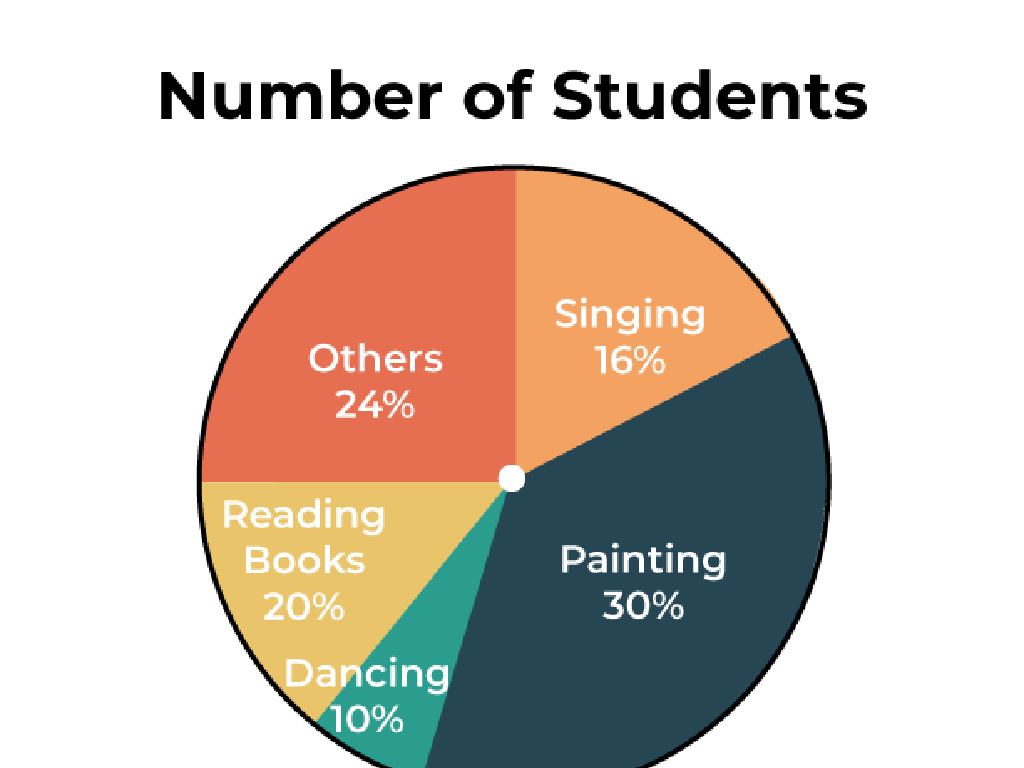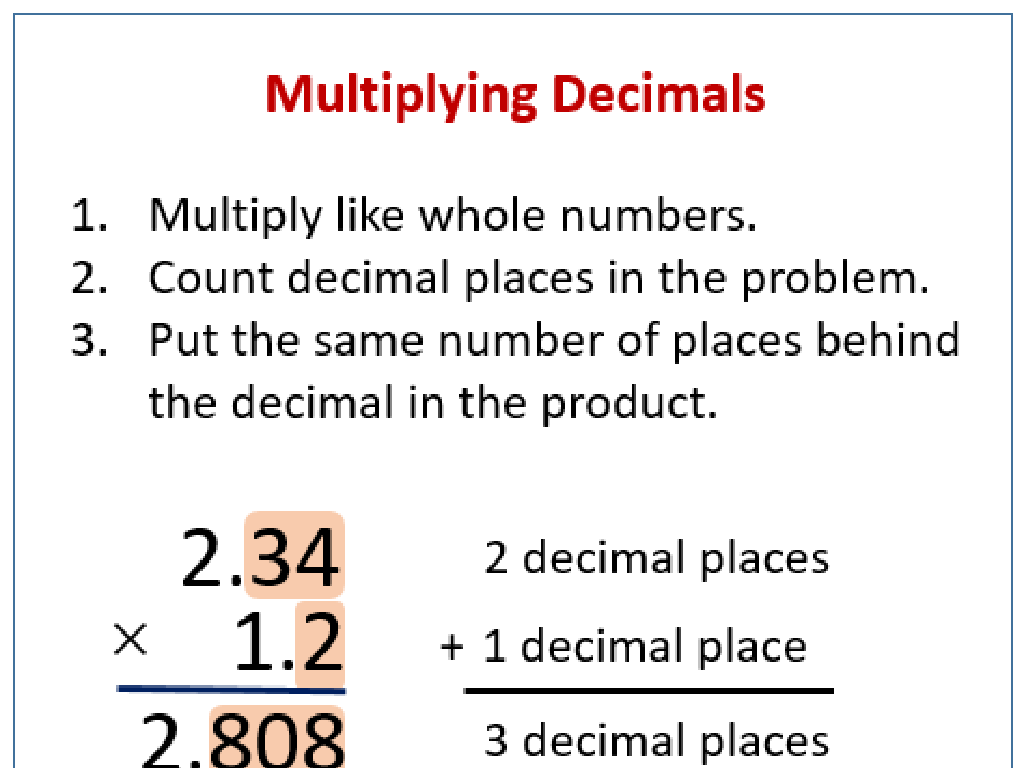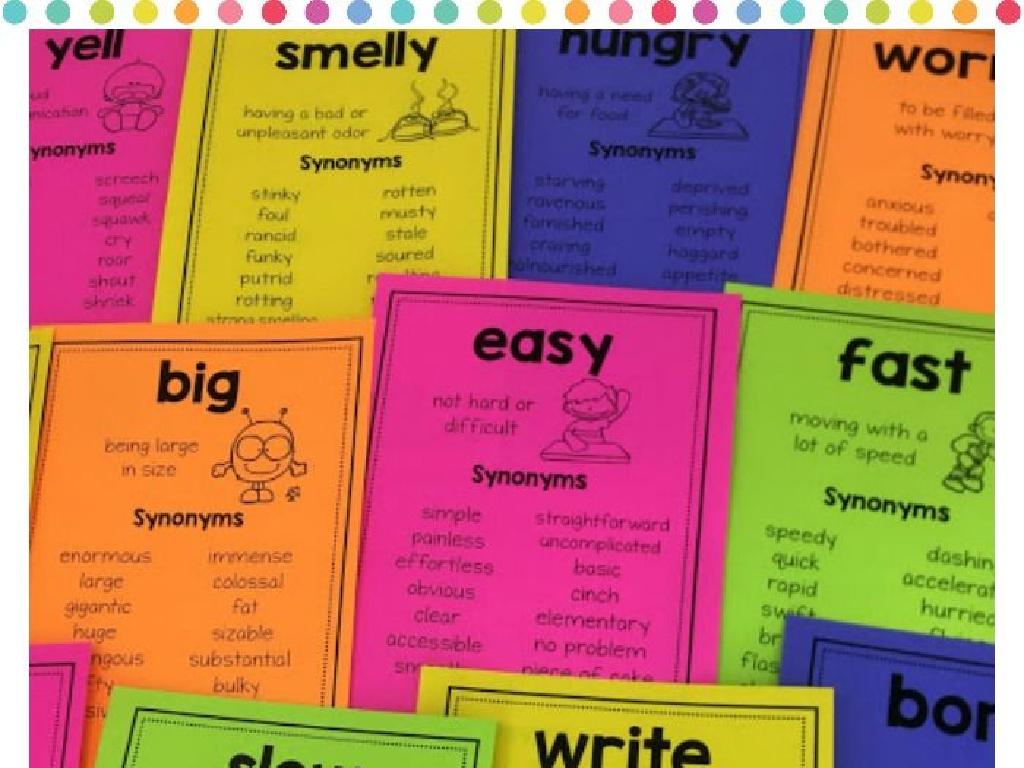Evaluate Powers
Subject: Math
Grade: Eighth grade
Topic: Exponents
Please LOG IN to download the presentation. Access is available to registered users only.
View More Content
Introduction to Exponents
– Define exponents and their power
– An exponent tells how many times to use the number in a multiplication.
– Understand the usefulness of exponents
– Exponents simplify writing and calculating large numbers.
– Explore exponential growth examples
– Population growth can show exponential trends.
– Apply exponents in real-life scenarios
– Calculating compound interest involves exponents.
|
Begin the lesson by defining exponents and explaining the concept of ‘power’ as a way to express repeated multiplication. Emphasize the utility of exponents in mathematics for simplifying the representation and calculation of large numbers. Provide real-life examples of exponential growth, such as population growth or compound interest, to illustrate how exponents are applied outside of the classroom. Encourage students to think of other areas where exponents might be relevant. This introduction sets the foundation for deeper exploration into the laws of exponents and their applications.
Understanding Base and Exponent
– Define base and exponent
– Base is the number being multiplied; exponent shows how many times
– Reading exponential expressions
– Say ‘2 to the power of 3’, meaning 2 multiplied by itself 3 times
– Example: 2^3 or 2 cubed
– 2^3 means 2 * 2 * 2 = 8
– More examples: 5^2 and 10^4
– 5^2 (5 squared) is 25, and 10^4 (10 to the fourth power) is 10,000
|
This slide introduces students to the concept of base and exponent, which are fundamental in understanding powers. The base is the number that is repeatedly multiplied, and the exponent indicates how many times the base is used as a factor. Emphasize the correct way to read exponential expressions aloud, as this helps in understanding and communicating mathematical concepts. Provide clear examples with small bases and exponents to ensure comprehension before moving on to larger numbers. Encourage students to calculate the given examples and come up with additional ones to reinforce the concept.
Rules of Exponents
– Multiplying with same base
– Multiply exponents when bases are same: a^m * a^n = a^(m+n)
– Dividing with same base
– Divide exponents, subtract: a^m / a^n = a^(m-n)
– Power of a power
– Power to a power, multiply: (a^m)^n = a^(m*n)
– Zero exponent rule
– Any number to zero power is 1: a^0 = 1
|
This slide introduces the fundamental rules of exponents, which are essential for simplifying expressions in algebra. When multiplying powers with the same base, we add the exponents. For division, we subtract the exponent of the denominator from the exponent of the numerator. The power of a power rule requires us to multiply the exponents. The zero exponent rule states that any base (except zero) raised to the power of zero equals one. Provide examples for each rule to ensure understanding. For instance, 2^3 * 2^2 = 2^(3+2) = 2^5, and (3^2)^3 = 3^(2*3) = 3^6. Emphasize that these rules only apply to expressions with the same base and that understanding these rules is crucial for working with more complex algebraic expressions.
Evaluating Powers with Exponents
– Steps to evaluate powers
– Identify base and exponent, then multiply the base by itself exponent times
– Example 1: Evaluate 3^4
– 3^4 means 3 multiplied by itself 4 times: 3 x 3 x 3 x 3 = 81
– Example 2: Evaluate (2^3)^2
– (2^3)^2 means 2 to the 3rd power, all squared: (2 x 2 x 2)^2 = 8^2 = 64
|
When teaching students to evaluate powers, start by explaining the components of a power: the base and the exponent. The base is the number that is being multiplied, and the exponent tells us how many times to multiply the base by itself. Work through Example 1 by multiplying 3 by itself 4 times to get 81. For Example 2, explain the concept of an exponent raised to another exponent, and how to simplify the expression step by step. Emphasize the importance of following the order of operations and provide additional practice problems to reinforce the concept.
Let’s Practice Evaluating Powers
– Evaluate the power 6^2
– 6^2 means 6 multiplied by itself: 6 * 6 = 36
– Evaluate the nested power (4^2)^3
– First evaluate 4^2 as 4 * 4 = 16, then raise to the power of 3: 16^3
|
This slide is designed to provide students with practice problems on evaluating powers, which is a key concept when working with exponents. The first problem is straightforward, asking students to square the number 6. The second problem introduces a nested power, where they must first evaluate the inner exponent before applying the outer one. It’s important to remind students of the order of operations and ensure they understand that exponents are not just about multiplication, but repeated multiplication. Encourage students to solve the problems step-by-step and verify their answers with peers or using a calculator. This exercise will help solidify their understanding of how to handle powers and prepare them for more complex exponent problems.
Class Activity: Exponent Bingo
– Receive your Exponent Bingo card
– Solve exponential expressions on the card
– Use your knowledge of powers to find the value
– Mark completed expressions for Bingo
– Aim to be the first with a full line
|
This interactive class activity is designed to help students practice evaluating powers in a fun and engaging way. Each student will receive a Bingo card filled with various exponential expressions. They must solve these expressions using the rules of exponents they’ve learned. As they find the correct answers, they’ll mark off the corresponding squares on their Bingo card. The goal is to be the first to complete a horizontal, vertical, or diagonal line. For the teacher: Prepare Bingo cards in advance, ensuring a mix of difficulty levels. Consider offering a small prize for the winner to motivate participation. Possible variations of the activity could include ‘Blackout Bingo’ where students must solve all expressions on the card, or ‘Four Corners Bingo’ requiring only the four corners to be solved. This activity reinforces the concept of powers and exponents in a playful manner, promoting both competition and learning.






